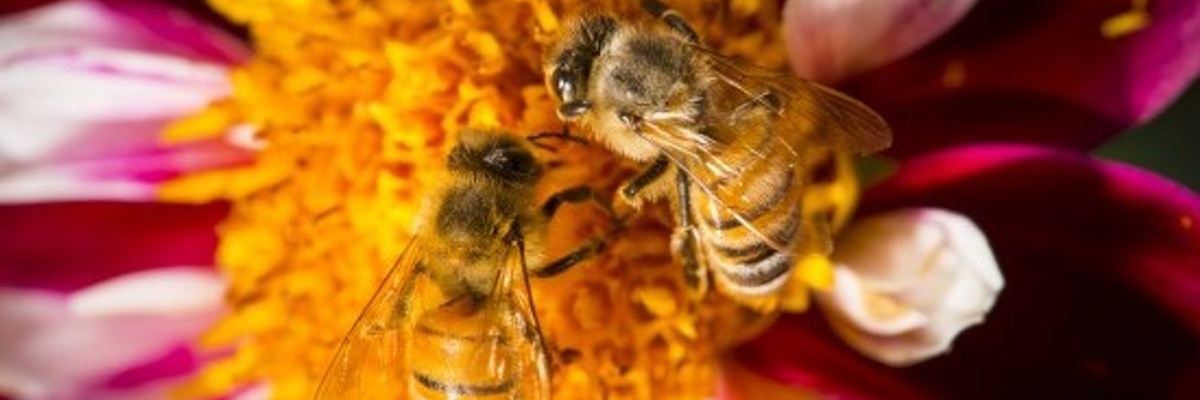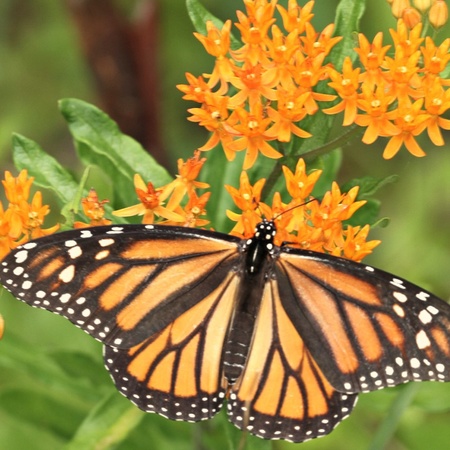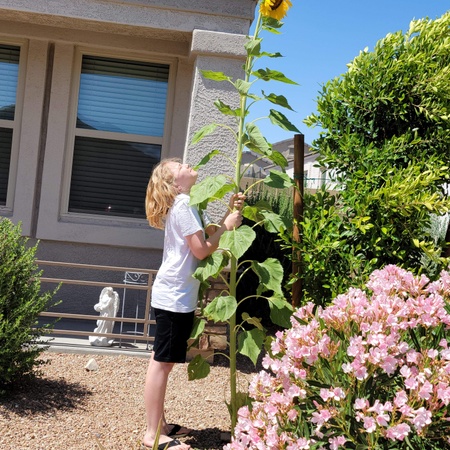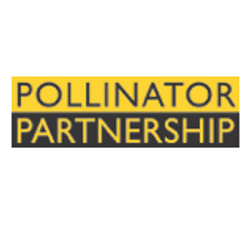

Invite pollinators to your neighborhood by planting a pollinator friendly habitat in your garden, farm, school, park or just about anywhere!
The Idea
Pollinator Partnership helps people protect pollinators to ensure healthy ecosystems and food security. The Pollinator Partnership’s mission is to promote the health of pollinators, critical to food and ecosystems, through conservation, education, and research. Their signature initiatives include the NAPPC (North American Pollinator Protection Campaign), National Pollinator Week, and the Ecoregional Planting Guides, which this page will help you to get started with in your community.
The ecoregional planting guides, Selecting Plants for Pollinators, are tailored to specific areas of the United States and Canada. You can find out which ecoregion you live in simply by entering your zip code / postal code at http://pollinator.org/guides and get your free guide tailored to the pollinators in your region. You can find lists of plant names that will attract pollinators and help you build a beautiful pollinator habitat! Print these lists and bring them to your local native plant, garden center or nursery and then get a group together and get planting!
Invite pollinators to your neighborhood by planting a pollinator friendly habitat in your garden, farm, school, park or just about anywhere!
The Idea
Pollinator Partnership helps people protect pollinators to ensure healthy ecosystems and food security. The Pollinator Partnership’s mission is to promote the health of pollinators, critical to food and ecosystems, through conservation, education, and research. Their signature initiatives include the NAPPC (North American Pollinator Protection Campaign), National Pollinator Week, and the Ecoregional Planting Guides, which this page will help you to get started with in your community.
The ecoregional planting guides, Selecting Plants for Pollinators, are tailored to specific areas of the United States and Canada. You can find out which ecoregion you live in simply by entering your zip code / postal code at http://pollinator.org/guides and get your free guide tailored to the pollinators in your region. You can find lists of plant names that will attract pollinators and help you build a beautiful pollinator habitat! Print these lists and bring them to your local native plant, garden center or nursery and then get a group together and get planting!
Our featured Grower - Solomon Amuzu from Accra, Ghana. He grew all the seeds we are giving out at the free Ghana Seed Event March 25th at Sienna Hills Elementary School. He will also be sending seeds to our sister school in northern Ghana - Kpaachi Yili. Better seeds means better harvests - more and better quality food!

Putting in a garden? Look here to learn about companion plants. https://www.almanac.com/companion-planting-guide-vegetables?trk_msg=S964UP20DBQKNEMHOEJKJ0SKKS&trk_contact=RGIKRVNGPCSAL2593NFKFFV5M0&trk_sid=5IATSS8QVEVTLPK86C7AVTA74O&trk_link=VQFTTSABDB4KL3C5J012L23RLO&utm_source=Listrak&utm_medium=Email&utm_term=Companion+Planting+Guide+for+Vegetables+(read+more)&utm_campaign=Companion+Daily
Article on the Best Milkweed Varieties for Monarch Butterflies

https://www.almanac.com/best-milkweed-varieties-monarch-butterflies?trk_msg=BC4T7IBRUTOK12K087S9NIGQ6C&trk_contact=RGIKRVNGPCSAL2593NFKFFV5M0&trk_sid=EFE2OQ352AS3OOLLELDAL0UACO&trk_link=FJE5G0KF6N6KNCNQU881E2IIJS&utm_source=Listrak&utm_medium=Email&utm_term=Best+Milkweed+Varieties+for+Monarch+Butterflies+(read+more)&utm_campaign=Companion+Daily
Our November Free Plant Event was a success. We gave away 2 carloads of plants, including Thai Bird Peppers, Lantana, Sweet Peppers, Swiss Chard, Spinach, Cauliflower, Coreopsis, Pumpkin, Lemongrass.
For caring more information on most of these plants, visit: https://growinginthegarden.com/arizona-garden-in-december/
Thai Bird Peppers: https://www.gardeningknowhow.com/edible/vegetables/pepper/how-to-grow-a-thai-peppers.htm
Lemongrass: https://phoenixtropicals.com/lemon_grass.html

Please save your fruit and vegetable containers! I can use these to put in mint and other plants from my garden for the free plant events. You can drop them off at the Odyssey High School office or at the Free Plant Events coming again in November.

It's butterfly time. This is what's happening in my backyard! The butterflies picked my milkweed to lay their eggs. The caterpillars are eating milkweed and plumping up, then they have been picking all different spots to make their crystalys (so far I have spotted 3, but they are very camouflaged.) These are called Queen butterflies. Information on the Queen https://www.butterflyidentification.com/queen.htm.
Here are videos of the Queen's cousin the Monarch turning from caterpillars to butterflies https://www.monarchbutterflies.info/p/monarch-chrysalis-stage.html

Plant and they will come! I planted milkweed for the butterflies and they have come and have laid eggs! Now we have at least 10 caterpillars! So excited to be part of this process! We will have seeds for everyone at our free plant events, which will start up again at our first POWWOW in November.

We made planters and filled them with pollinator-friendly plants. Students learned about which plants we could use and they designed the arrangements in the planters. The students also did the watering and monitoring of the plants.
We gave away plants, ladybugs, and praying mantids to the scholars and staff of our school. Anyone who wanted a plant, ladybug, or mantid could have one- until the supply ran out. Mammoth sunflowers and praying mantids were the most popular (black-eyed peas were the least). Lots of people showed me pictures of how well their plants were growing. Some scholars even began small gardens based on the success they were having with their free plants. Scholars even began bringing me plants as well. One scholar brought in a sweet potato that was sprouting, and we were able to give away the slips to others.
We began having monthly Free Plant Events. We gave away plants (some from my backyard and some germinated from seeds) to the community. At the last Free Plant Event before the summer break, I also gave away seeds (cilantro, tecoma stans, canna lily, and vitex) I had harvested. I provided information on how to grow and care for these plants on the ChangeX website. The website was used to provide information on how to be more pollinator-friendly at home and alternatives to pesticides and chemical fertilizers.
We invited pollinators to our campus with our plants and hummingbird feeders- and they came!





One mammoth sunflower success story! How are your sunflowers doing? (The birds are starting to eat mine!)


Tip #1: Sunflowers can be planted all summer long. Tip #2: Dry and save the stalks to use as support for other plants. Tip #3: The National Sunflower Association suggests soaking the seeds in a salt and water mixture overnight and cooking them the next day at 300 degrees on a cookie sheet for 30 to 40 minutes. After they are roasted and have had time to cool, store the seeds in a sealed container for snacking. https://www.ftd.com/blog/share/how-to-prepare-and-eat-sunflowers
Butterfly Gardening Information
https://www.almanac.com/butterfly-gardening?trk_msg=I7CM8H8M5U7KP9FQJI84545UC0&trk_contact=RGIKRVNGPCSAL2593NFKFFV5M0&trk_sid=7PIII5MVQ9DMTMAMBT1U1JLEL8&utm_source=Listrak&utm_medium=Email&utm_term=Butterfly+Gardening+(read+more)&utm_campaign=Companion+Daily

